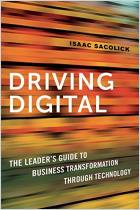
Diffusion of Innovations
Read offline
Recommendation
Why would a villager draw polluted drinking water from a canal where a dead donkey floats instead of using a nearby tap to get clean drinking water? Why did it take hundreds of years for the British Navy to give sailors oranges and lemons when tests had proven that citrus fruit cured the scurvy that killed sailors and left vessels under-manned? Why do eminently sensible things not happen? If you’ve ever wondered, this book will give you the answers. It’s a thick, heavy, academic tome, but spiced with abundant anecdotes and observations that make it an easy, enjoyable read. This is the rare book that combines solid intellectual content with thought-provoking entertainment. getAbstract.com highly recommends this classic from 1962 to all audiences, but especially those whose business it is to understand and use the social mechanisms through which innovations must diffuse.
Take-Aways
About the Author
Everett M. Rogers is a Distinguished Professor in the Department of Communication and Journalism at the University of New Mexico, where he teaches and conducts research on the diffusion of innovations. The four previous editions of Diffusion of Innovations have received various awards, including designation as a "Citation Classic" by the Institute for Scientific Information.
















Comment on this summary or Diskussion beginnen